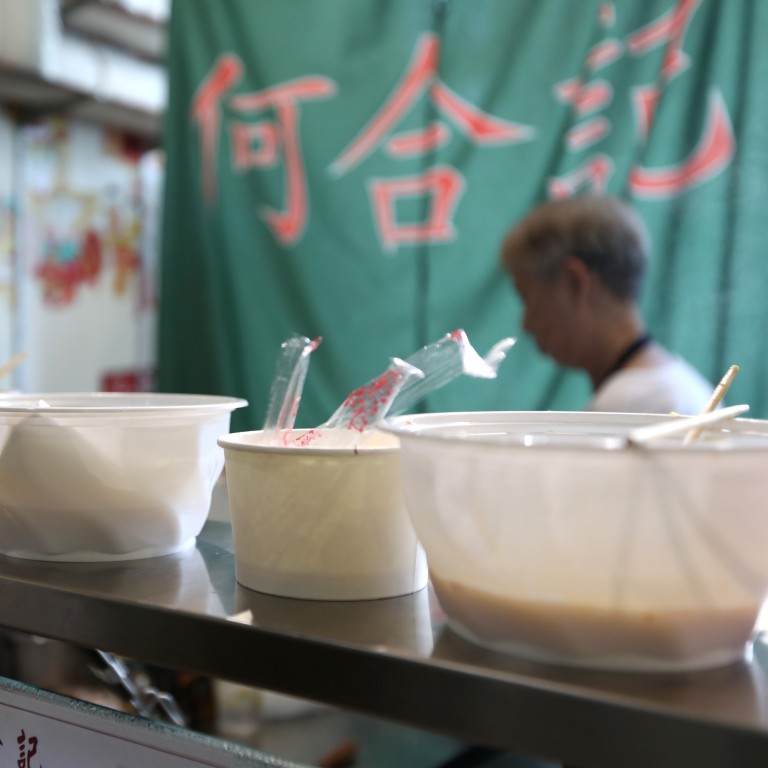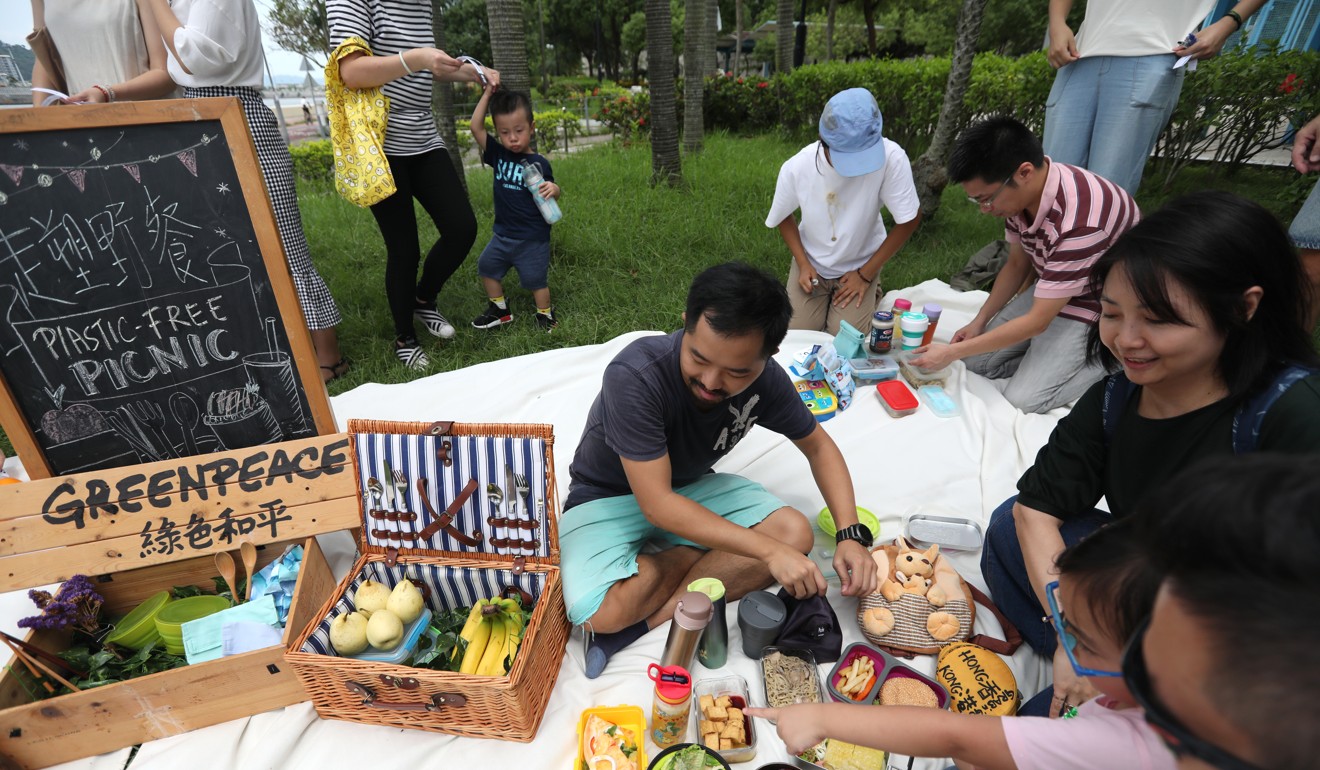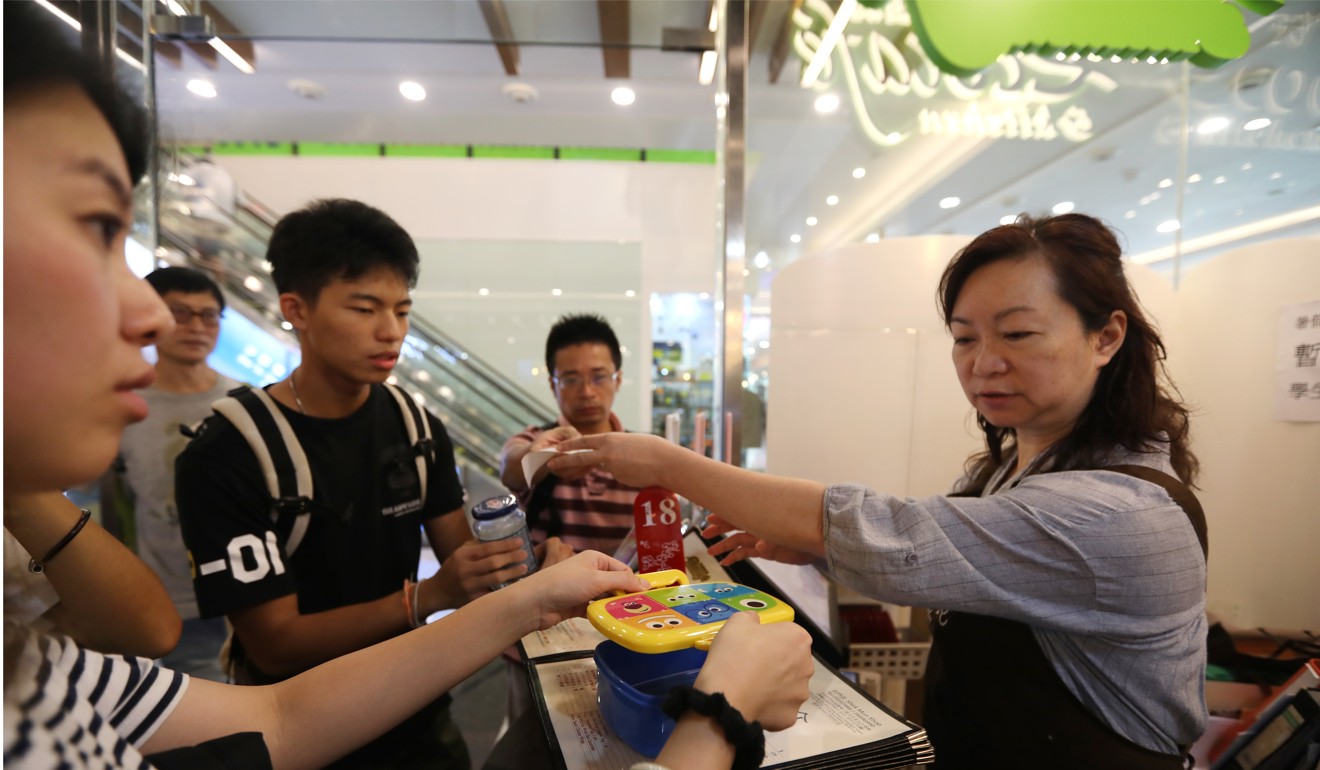
Greenpeace scheme aims to turn Hong Kong into a plastic-free city one community at a time
- Business owners and residents in Sha Tin take part in picnic without plastic as green group launches awareness campaign
- Restauranter Joyce Ho happy to give customers incentive to bring own containers
When noodle vendor Joyce Ho Cho-ting opened her restaurant in Sha Tin in April, she did not consider environmental protection and reduction of plastic to be key ingredients in the process.
But a picture of a sea turtle with plastic straws up its nose changed her mind.
“I saw that in the news and the image stuck in my mind,” the 39-year-old says. “I can only imagine how painful it must be for the poor turtle.”
In a bid to cut plastic waste in the city, environmental group Greenpeace piloted a plastic-free community initiative in Sha Tin in May, which was supported by 180 small stores and restaurants in the district.
Participating shops have put up stickers to indicate they are plastic-free friendly, and offer discounts to customers who opt for less plastic, by bringing their own shopping bags, or not asking for plastic utensils when ordering food to take away.

On Wednesday, the green group launched an awareness campaign in the community, where residents took part in a plastic-free picnic in Shek Mun, an area of Sha Tin, by bringing their own bowls and containers to buy food and drinks from those shops.
“Sha Tin has a large, well-educated, middle class population who are concerned about pollution of the environment by plastic waste,” says Natalie Ng Sze-man, a community outreach campaigner with Greenpeace.
“Many small businesses also have greater autonomy in changing their operations to reduce plastic. With these favourable factors, we are able to create a synergy effect in the community with more people going plastic free.”
Why it is so hard for Hong Kong to ditch plastic, and how appeals to self-interest can help
Ho, who runs a traditional à la carte noodle business called Ho Hope Kei, which serves signature local toppings such as fishballs, mushrooms, and pig skin, has joined the pilot scheme and offers extra vegetable toppings if customers bring their own containers.
“I am just doing my fair share to help conserve the environment,” she says. “It does not cost me a lot, and I might even be able to save the HK$500 I spend on plastic containers each month if people stop asking for them.”
In 2017, Hong Kong’s landfills took 2,124 tonnes of plastic waste a day, a slight drop from the 2,132 tonnes in 2016 and 2,183 tonnes in 2015, representing about 20 per cent of total municipal solid waste collected, according to the Environmental Protection Department.

Housewife Samantha Ho Sin-wun, 31, brought her two-year-old son to the picnic on Wednesday. She bought a vegetarian burger, salad and spaghetti using her own lunchbox. She says financial incentives do help, but she has other concerns about eliminating single-use plastics.
“I usually just get a plastic container and bag when I order takeaway, since it’s more convenient especially if I am going out with my son,” she says. “I am also quite shy to ask waiters to put food in my own lunchbox, because I don’t know how they will react and whether they may think I am making a strange request.
“But having a ‘plastic-free’ sticker at the shops, and a ‘plastic-free’ community definitely help, because I know for certain the shops welcome customers who go plastic free.”
Ng says Greenpeace hopes to create more plastic-free communities in the future, and will start with Tai Po, the district next to Sha Tin.
“Most businesses and customers are environmentally friendly, and are only unfamiliar with how reducing plastic works in practice,” she says. “Once they find out more about the practicalities, they usually come round to the concept and sign up to the scheme.”
